Ferulic acid, originally found in the seeds and leaves of plants, is a phenolic acid widely found in plants. It can bind with polysaccharides and proteins in the cell wall to become the skeleton of the cell wall, and seldom exists in the free form. It is found in high levels in Chinese herbs such as Ferula asafoetida,Actaea, Angelica sinensis, and jujuba. Ferulic acid is also present in high levels in cereal hulls, coffee, wheat bran, rice bran, bagasse and beetroot meal. Nowadays, ferulic acid is mainly used in food, cosmetics and medicine field. This article will show you ferulic acid benefits in cosmetics uses.

Figure . Ferulic acid content in different sources
- Ferulic Acid Sources for Cosmetics Uses
There are mainly 3 sources to obtain ferulic acid. One is extracted from natural plants, such as angelica, vanilla bean, wheat bran and rice bran, and then obtained by alkaline hydrolysis or enzymatic hydrolysis of ferulic acid. Another is chemical synthesis: synthesized by Knoevngael reaction using vanillin and malonic acid as raw materials. The third one is biosynthesis: using some microorganisms, the precursor substances of ferulic acid are transformed to obtain it. Ferulic acid obtained by the three sources is physiologically equivalent.
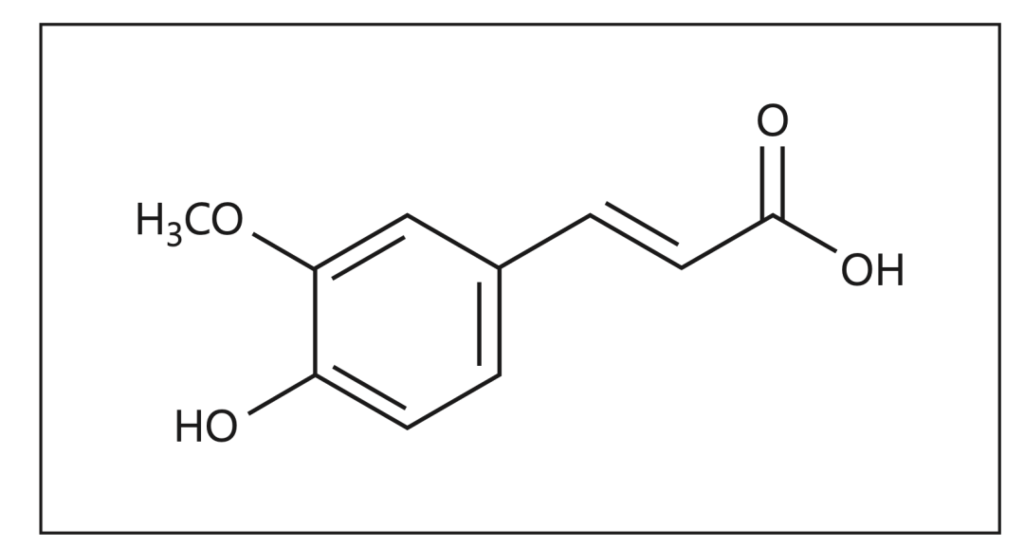
Figure . Chemical structure of ferulic acid.
More information, please visit Ferulic Acid Introduction
Ferulic acid has good pharmacological effects and biological activities, and thus has a high application value in medicine, health products and cosmetic industry.
Ferulic acid is a weakly acidic organic acid, with antioxidant, sun-protection, whitening, anti-inflammatory and other effects. Generally it shows strong antioxidant capacity combining with other tyrosinase inhibitors (such as VC, VE, resveratrol, phloretin, etc.) to achieve synergistic effect.
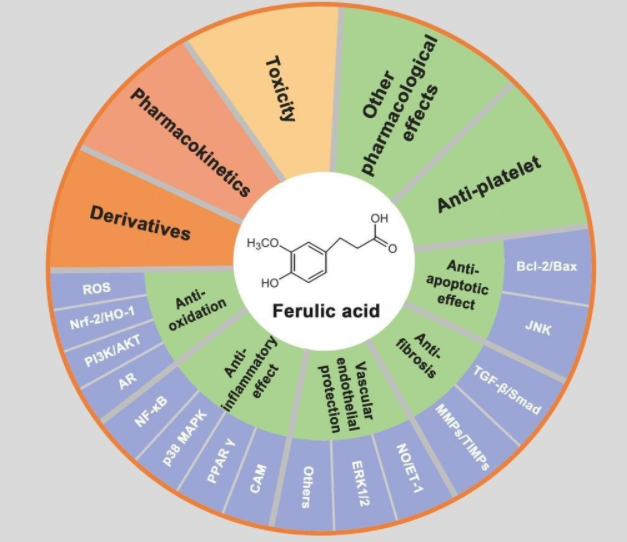
Figure. Ferulic acid benefits in cosmetics uses
- Ferulic Acid Benefitsin Anti-oxidation
Ferulic acid has more mechanisms in antioxidant, such as inhibiting the generation of reactive oxygen species (ROS) and scavenging excessive free radicals. In addition, it can chelate protonated metal ions and prevent lipid peroxidation. In various in vivo and in vitro assays, ferulic acid has been shown to significantly increase the activity of a range of antioxidant factors (TAC content, SOD and CAT activity).
Ferulic acid has a phenolic acid structure with unsaturated double bonds and hydroxyl groups. It was found that ferulic acid has a strong reducing capacity for Fe3+, twice than that of VC.
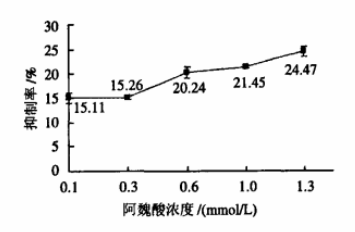
Figure. Ferulic acid benefits in anti-oxidation
A review study analyzed back in 2006 showed that ferulic acid has been used as an excellent antioxidant in the treatment of a wider range of diseases. The use of ferulic acid as an antioxidant in skin care products has also been widely recognized for a long time.
The antioxidant effect of ferulic acid is also reflected in the significant improvement of skin barrier protection even after oral administration. For example, 200 mg of ferulic acid taken orally daily for 2 weeks dramatically reduced transepidermal water loss and enhanced hydration.
- Ferulic Acid Benefits in Anti-inflammation
Ferulic acid was found to inhibit MAPKs signaling pathway, up-regulate PPARγ, inhibit NF-kB expression, etc. It reduces 1L-1β, 1L-6, and TNF-α inflammatory factors by inhibiting MAPKs signaling pathway, and inhibits 1L-1β, 1L-6, TNF-α, iNOS, and COX-2 inflammatory factors through up-regulation of PPARγ signaling pathway. Also it achieves effective anti-inflammatory/soothing effects by inhibiting the expression of NF-kB and reducing the expression of COX-2, iNOS and cell adhesion factors.
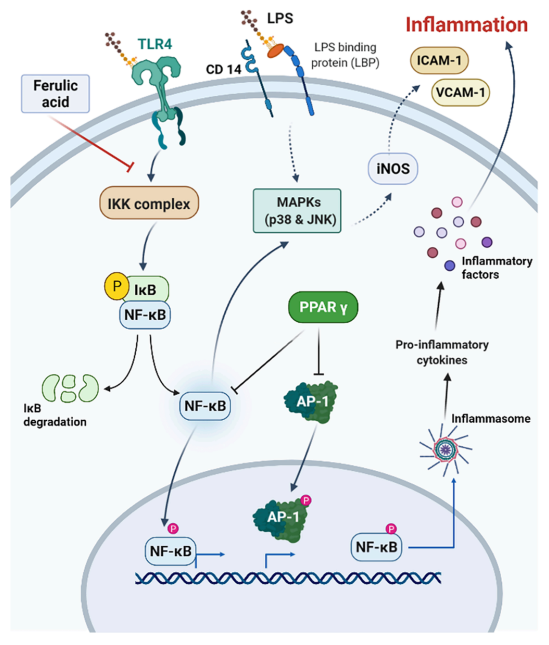
Figure. Ferulic acid benefits in anti-inflammation
- Ferulic Acid Benefits in Skin Whitening
In a study published in 2018, it was shown that ferulic acid has an inhibitory effect on both melanin synthesis and tyrosinase activity at the cellular level. Besides that, Ferulic acid also inhibits MITF expression at the protein level. In melanoma cells, the expression of MITF is associated with melanin production and cell growth, and is therefore considered a possible therapeutic target for melanoma.
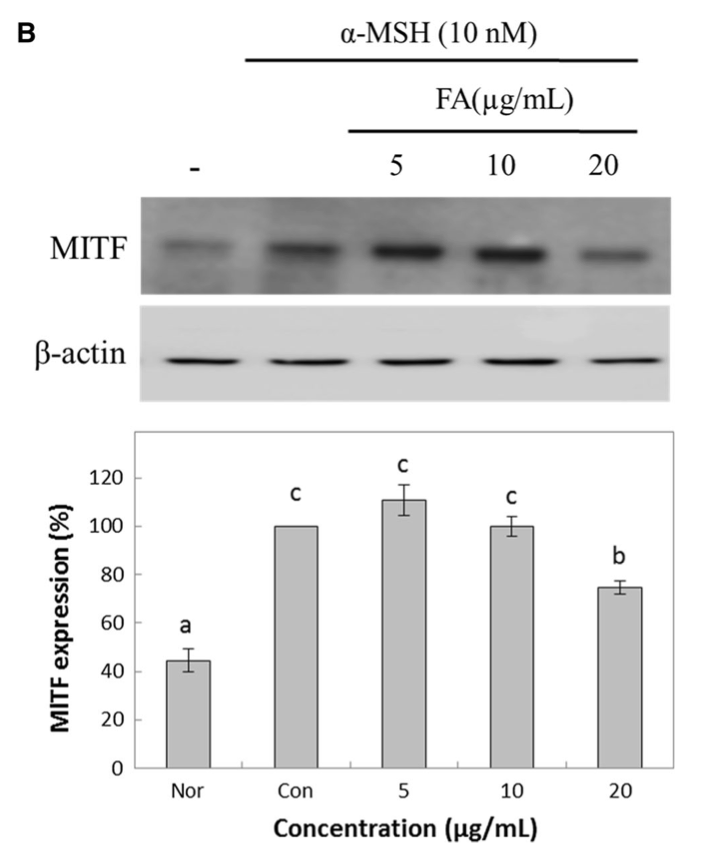
Figure. Ferulic acid benefits in whitening skin
- Ferulic Acid Benefits in Sun-protection
Because ferulic acid has a cinnamate structure, it is inherently sun-protective. The studies have shown that it can directly absorb UV rays from 290-320nm. More critically, ferulic acid, as an antioxidant-capable natural sun-protector, has safer properties than other sunscreen ingredients such as diphenyl ketone. It is less prone to potential photo-toxicity due to the high production of free radicals, and therefore has a high safety.
A 2018 study showed that combining 1% ferulic acid with several other sunscreen ingredients such as 5% ethylhexyl triazone (a UVA sunscreen) and 10% Bis-ethylhexyloxyphenol methoxyphenyl triazine (UVA and UVB sunscreens) was able to increase SPF by 37% and PA by 26%, respectively.
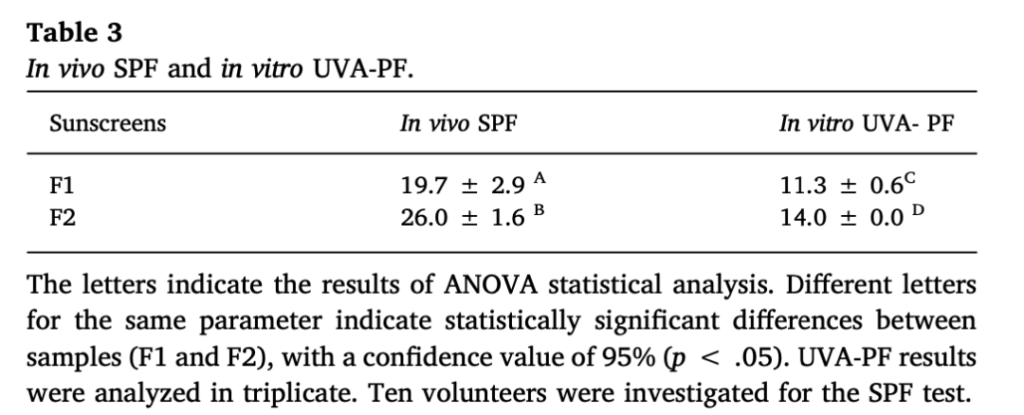
Figure. Ferulic acid benefits in sun-protection
- Ferulic Acid Benefits in Anti-wrinkle
It was found that the main pathway of ferulic acid to inhibit collagen breakdown is to inhibit the expression of matrix metalloproteinase-1 (MMP-1) and increase the expression of matrix metalloproteinase inhibitor-1 (TIMP-1). Via inhibiting the extracellular matrix and the activity of MMP-1, matrix metalloproteinase-9 (MMP-9), ferulic acid can increase the production of fibroblast extracellular matrix pre-collagen and hyaluronic acid to achieve anti-wrinkle effect.
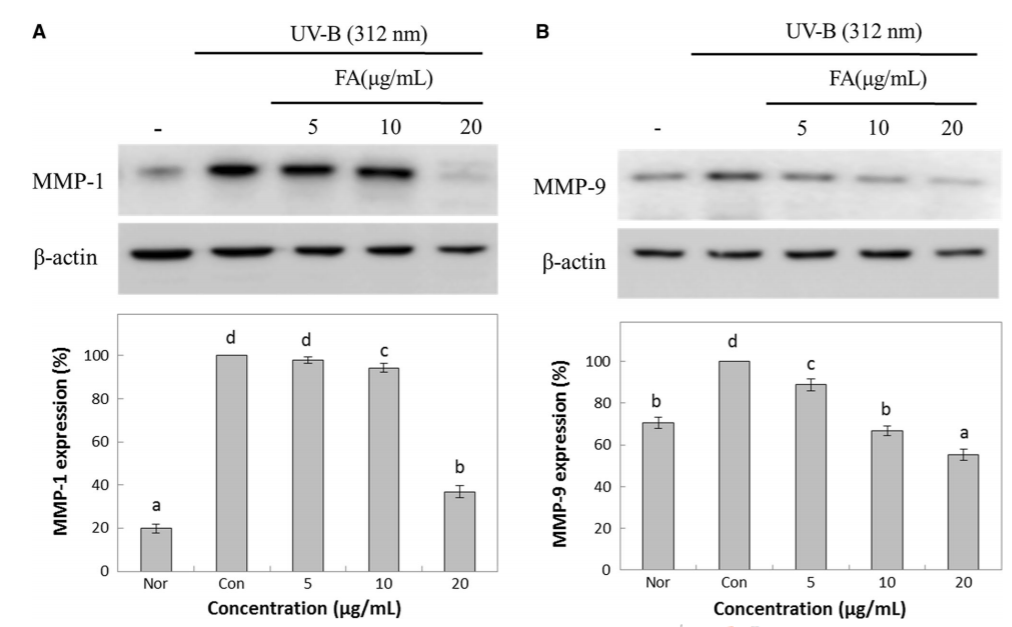
Figure. Ferulic acid benefits in anti-wrinkle
- Ferulic Acid Uses in Cosmetics Formulation
In skin care products, ferulic acid is effective as long as it is added in concentration greater than 0.1%, and in efficacious products the dosage added is usually between 0.1-1%.
pH and temperature are critical to the stability of ferulic acid. Alkaline conditions and high temperatures dramatically accelerate the degradation of ferulic acid. At low pH ferulic acid remains essentially stable in solution, while at high pH it will accelerate degradation and appears color change. Ferulic acid is a weakly acidic organic acid, and the pH value of the system has an effect on its stability, so the pH value of the system should not be too high or too low. The applicable pH range is 3.0-6.0.
At the same time, metal ions in the degradation process of ferulic acid plays a role similar to the role of the catalytic centre, will accelerate the degradation of ferulic acid.
Ferulic acid should not be combined with triethanolamine, phenoxyethanol and octyl glycol in the cosmetics formulation. It can combine with VC and VE to enhance the transdermal penetration and stability of VC and VE; and its photoprotective efficacy is twice as high as that of formulations using vitamins C and E alone. Ferulic acid is a good match with resveratrol, or with retinol.
In conclusion, ferulic acid is a weak acid, at low temperatures and low pH, ferulic acid is relatively stable in bis-propylglycol. Ferulic acid benefits in cosmetics uses are mainly in antioxidant, anti-inflammatory, skin whitening, and anti-wrinkle properties.
Related Reading







